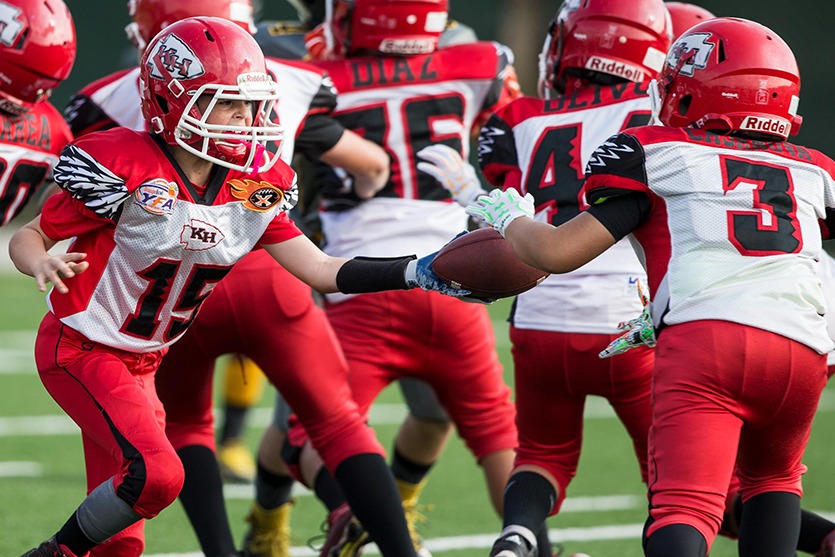Sports
Football Running Back Tips

Among the most important characteristics for a running back are vision, pace, running ability, and blocking ability, to list a few and You also need to be intellectual in order to understand the games and recognize your position on each and every match.
Both of these facets can be improved, and there are many things you can do to progress as a running back. Here are some tips to enable you to get started:
-
Table of Contents
Line up in the right posture.
The two-point stance is by far the most traditional stance for a running back in แทงบอลออนไลน์. Tailbacks mostly use the two-point posture, with their hands on their calves, their feet shoulder-width away, and their weight on the balls of their feet. His head is lifted, his knees are slightly bent at the elbows, and his toes are parallel to each other, feet pointing toward the goal line.
-
Take a look at the field.
A back, like a basketball player on a fast break, must have depth perception. He must be able to see what is coming from the field’s corners. Backs with outstanding speed (4.4 seconds in the 40-yard drive) can earn a lot of yardage by predicting the defensive chase and fleeing away from it. Backs without great speed, on the other hand, can be effective by detecting danger and attempting to establish a horizontal line to the end zone (these backs are known as north/south runners). Backs with great speed, on the other hand, can outrun several linebackers by running to the end zone’s corner whether safety is 10 yards to the left or right.
-
Block for another back.
A team’s starting running back is almost never a decent blocker. Fullbacks, which are expected to block players 30 to 100 pounds heavier than them, are the strongest blockers among the backs. A running back must keep low and smash into the defender’s upper body, making contact with his hands (in closed fists) and forearms.
Catching Practice
Running back is more than simply carrying the ball from the goal line. Running routes and catching the ball downfield would make you a more flexible and dynamic running back.
Practice Blocking
You will rarely not be active as a playmaker during the game and will be expected to defend the quarterback. Simply improving your blocking skills would make you a much more successful running back and provide you with more playing time.
Taking a handoff.
An athlete does not fumble the football after receiving it from the quarterback. His hands must shape a pocket inside his stomach to do this correctly. If the back is right-handed, he twists his left upper arm at a 90-degree angle, keeping his forearm flat to the deck, and turning up his left hand’s palm. When the quarterback puts the ball in his stomach position, his right forearm and hand tighten around it.
Run as fast as you can
When a running back catches a handoff, he should be running at almost full speed. His elbows remain square to the line of scrimmage, or his head is straight. He’s bending over slightly to keep his position low, and his legs are propelling him forward. The back fakes a jump away from the opponent (trying not to push too much load) and then turns sharply to the inside of the defence for a cut-back sprint (of course, the opponent must move for the cut-back to be successful).

-

 Health5 years ago
Health5 years agoAdvantages and Disadvantages of Milk
-

 Tech4 years ago
Tech4 years ago6 Tips to Improving E-Commerce Websites
-

 Home5 years ago
Home5 years agoAdvantages and Disadvantages of Village Life in Points
-

 Travel5 years ago
Travel5 years agoAdvantages and Disadvantage of Travelling
-

 Sports3 years ago
Sports3 years agoThe benefits of playing an online live casino
-

 Tech5 years ago
Tech5 years ago10+ Advantages and Disadvantages of Mobile Phones in Points
-

 Tech5 years ago
Tech5 years agoEssay on Advantages and Disadvantages of Offline Shopping
-

 Tech5 years ago
Tech5 years ago8+ Advantages and Disadvantages of Motorcycle |Having Bike